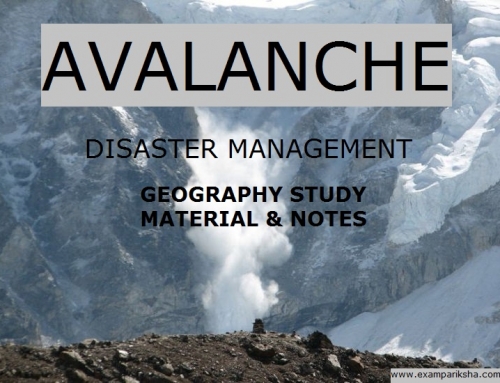Wetlands are identified as one of the most useful natural resource systems. India’s wetlands are distributed in different geographical regions ranging from the cold arid zone of Ladakh to the wet humid climate of Imphal; the warm arid zone of Rajasthan to tropical monsoon Central India, and the wet humid zone of the southern peninsula.
What are Wetlands?
Defined as – “Areas of marshes, fen, peat-land or water whether natural or artificial, permanent or temporary with water, that is static or flowing, fresh, brackish or salt including areas of marine water, the depth of which does not exceed six metres”.
Importance of Wetlands
A number of physio-chemical and biological processes occur in a wetland like sedimentation, storage, ion exchange, nutrient uptake, absorption, adsorption, bacterial and fungal dissemination, nitrification, etc. Apart from harbouring birds, wetlands are also a nursery ground for several species of fish and shell fish and a wide variety of aquatic organisms.
For example, Chilka in Orissa, has dolphins who move around in the area where the lake meets the sea. Coastal wetlands especially being an ecotone between the sea and fresh water, and/or freshwater and terrestrial habitats have high specie diversity. Wetlands perform the following functions:
- Provide habitat for a wide variety and number of wildlife and plants
- Filter, clean and store water – acting like kidneys for other ecosystems
- Act like sponges by holding flood waters and keeping rivers at normal levels.
- Absorb wind and tidal forces.
- Provide places of beauty and many recreational activities
- Wetlands also filter and purify water as it flows through the wetland system.
- Plants found in wetlands help control water erosion.
What is Ramsar Convention and Montreux Record ?
It is named after the Iranian city of Ramsar, on the Caspian Sea. The Convention on Wetlands was signed in Ramsar, Iran, in 1971, is an intergovernmental treaty which provides the framework for national action and international cooperation for the conservation and wise use of wetlands and their resources.
Known officially as ‘the Convention on Wetlands of International Importance especially as Waterfowl Habitat’ (or, more recently, just ‘the Convention on Wetlands’), it came into force in 1975.
There are presently 158 Contracting Parties to the Convention.
Note that: Ramsar Convention is the only global environment treaty dealing with a particular ecosystem.
Montreux Record under the Convention is a register of wetland sites on the List of Wetlands of International Importance where changes in ecological character have occurred, are occurring, or are likely to occur as a result of technological developments, pollution or other human interference. It is
maintained as a part of the Ramsar List.
The Montreux Record was established by Recommendation of the Conference of the Contracting Parties (1990). Sites may be added to and removed from the Record only with the approval of the Contracting Parties.
| World Wetlands Day
Celebrated every year on 2nd February, marking the date of the adoption of Convention on Wetlands in 1971. India is a party to the Convention since 1982 and committed to the Ramsar approach of wise use of wetlands.
|
List of Wetlands in India
India presently has 26 wetlands designated as Ramsar sites. This turns out to be 4.5 per cent of the total wetland area of the country.
- Ashtamudi Wetland, Kerala
- Bhitarkanika Mangroves, Orissa
- Bhoj Wetland, Madhya Pradesh
- Chandertal Wetland, Himachal Pradesh
- Chilika Lake, Orissa
- Deepor Beel, Assam
- East Calcutta Wetlands, West Bengal
- Harike Lake, Punjab
- Hokera Wetland, Jammu & Kashmir
- Kanjli, Punjab
- Keoladeo National Park, Rajasthan
- Kolleru Lake, Andhra Pradesh
- Loktak Lake, Manipur
- Nalsarovar Bird Sanctuary, Gujarat
- Point Calimere Wildlife and Bird Sanctuary, Tamil Nadu
- Pong Dam Lake, Himachal Pradesh
- Renuka Wetland, Himachal Pradesh
- Ropar, Punjab
- Rudrasagar Lake, Tripura
- Sambhar Lake, Rajasthan
- Sasthamkotta Lake, Kerala
- Surinsar-Mansar Lakes, Jammu & Kashmir
- Tsomoriri, Jammu & Kashmir
- Upper Ganga River (Brijghat to Narora Stretch), Uttar Pradesh
- Vembanad-Kol Wetland, Kerala
- Wular Lake, Jammu & Kashmir
Major issues pertaining to wetlands in India
Wetlands in India account for 4.7% of the total geographical area. The Ministry of Environment, Forest and Climate Change, is the nodal Ministry for wetlands conservation and has been supporting the State Governments/ Union Territories since 1985, in design and implementation of Management Action Plans for conservation and management of wetlands including Ramsar sites.
According to National Disaster Management Authority, over 40 million hectares which means 12% of land in India is prone to floods and river erosion.
- Illegal land reclamation
- Dumping of solid and non degradable waste
- Government attempt to set up sewerage plant in wetland areas.
- Silatation occurs as aresult of denudation of forest and shrublands due to increased human activity in the catchment area.
- Pollution from habitations on the periphery of lakes find their way inside, damaging the flora and the fauna. The Pulicat lake in Andhra Pradesh, which used to be an important centre of breeding water birds, has now become threatened due to chemical pollution.
- Shrinkage of area – Due to encroachment of the peripheral area, the lake area gets reduced. These encroachments may be for pisciculturc or aqua culture as in Chilka lake, or due to human encroachment like in The famous Dal lake in Srinagar has been shrinking due to human encroachment.
It is noteworthy that, 17 wetlands has been identified in India on the verge of extinction.
Further reading for the curious: Atlas of Wetlandsh (refer Page 6)





